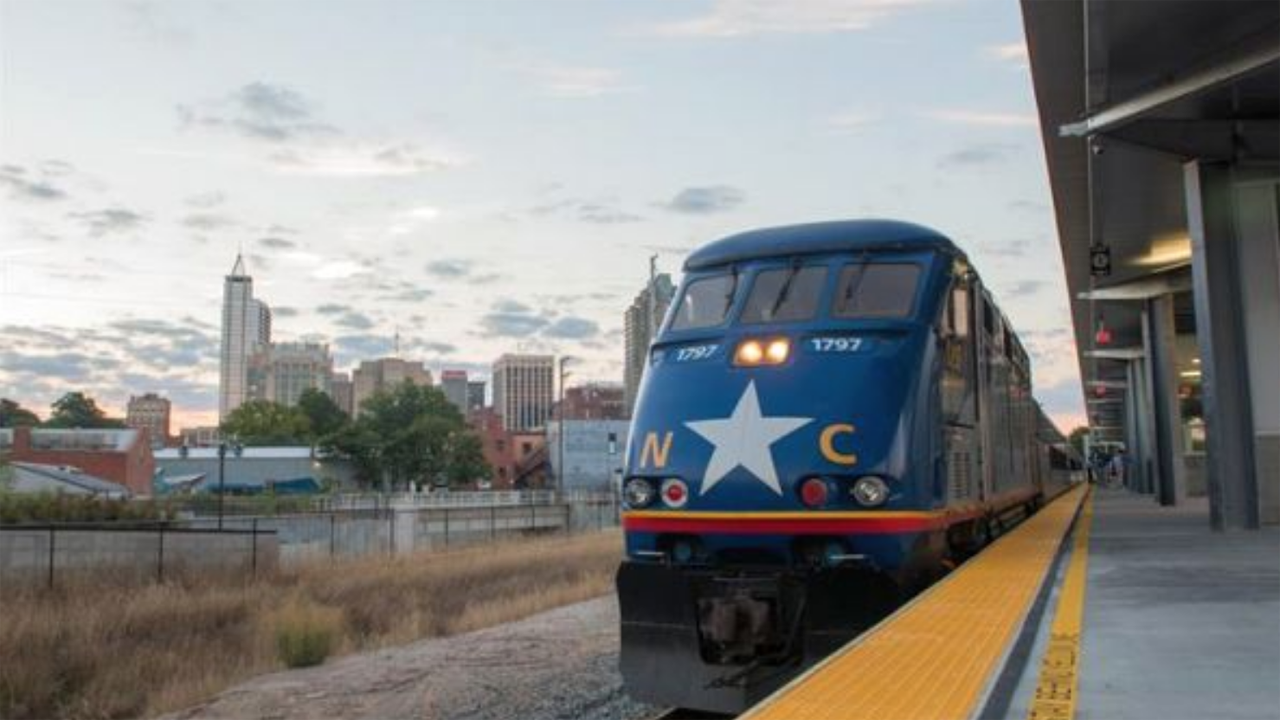
FRA Boosts Funding, Extends Deadline for Partnership Program NOFO
Written by Marybeth Luczak, Executive Editor
Previous Partnership Program grants from the FRA have funded rehabilitation-type projects such as the Kalamazoo to Dearborn rail corridor in Michigan and the Piedmont Corridor in North Carolina.
The Federal Railroad Administration (FRA) on Feb. 3 issued an extension and supplemental funding notice for the Federal-State Partnership for Intercity Passenger Rail Program (Partnership Program) for projects not located on the Northeast Corridor. The total funding now available has nearly doubled.
FRA reported in the Federal Register that it is amending its FY 2022 Notice of Funding Opportunity (NOFO) for the Partnership Program, which was published Dec. 7, 2022, by adding up to approximately $2.3 billion to its original $2.3 billion in funding for a total of up to approximately $4.6 billion, and by extending the period for submitting applications to April 21, 2023, from the original March 7, 2023 deadline.
According to FRA, the basis for the funding increase and application deadline extension is the appropriation of additional amounts for the Partnership Program from the Consolidated Appropriations Act, 2023, “together with the government’s goal of efficiently administering such funds.” The agency noted that should additional funds become available after the release of the Feb. 3 NOFO (download below), FRA “may elect to award such additional funds to applications received under this NOFO. Any selection and award under this NOFO is subject to the availability of appropriated funds.”
Administered by the FRA, the Partnership Program “has long funded the revitalization of rail assets, such as fixing track, structures, and grade crossings,” according to the U.S. Department of Transportation. “Previous grants have funded rehabilitation type projects such as the Kalamazoo to Dearborn rail corridor in Michigan and the Piedmont Corridor in North Carolina. These routes and others are used by tens of millions of Americans each year, and new investments will increase the reliability and frequency of service and reduce delays.”
The Bipartisan Infrastructure Law (also known as the Infrastructure Investment and Jobs Act) “greatly expands the scope, funding and vision of the Partnership Program,” the USDOT reported Dec. 7. In addition to projects that “replace, rehabilitate, or repair infrastructure, equipment or a facility used for providing intercity passenger rail service to bring such assets into a state of good repair,” for example, “eligible entities can now apply to expand and establish new intercity passenger and high-speed rail services. In addition, projects that improve the safety, reliability, and performance of intercity passenger rail services and project planning elements, such as environmental review and final design, are also now eligible for funding under the Partnership Program.”
Grant funding is specifically for projects not located on the Northeast Corridor, which comprises the main rail line between Boston, Mass., and the District of Columbia; the branch rail lines connecting to Harrisburg, Pa., Springfield, Mass., and Spuyten Duyvil, N.Y; and facilities and services used to operate and maintain these lines. FRA on Dec. 22 published a separate NOFO for projects located on the Northeast Corridor.
FRA on Dec. 7 reported that it is looking to award projects “that align with the President’s greenhouse gas reduction goals, promote energy efficiency, support fiscally responsible land use and efficient transportation design, increase climate resilience, support domestic manufacturing, and reduce pollution.” It also said it seeks projects that address environmental justice, racial equity and barriers to opportunity, and “deteriorating conditions and disproportionately high fatality rates and transportation costs in rural communities.”
Eligible applicants include a state (including the District of Columbia); a group of states; an Interstate Compact; a public agency or publicly chartered authority established by one or more states; a political subdivision of a state; Amtrak, acting on its own behalf or under a cooperative agreement with one or more states; a federally recognized Indian Tribe; or any combination of these entities. The federal share of total costs for projects funded under this Notice will not exceed 80%, according to FRA, which noted that the minimum 20% non-federal share may comprise public-sector (e.g., state or local) or private-sector funding.
In related developments, FRA in November published a NEC priority-project list that it said will serve as a “pipeline to assist Amtrak, states and the public with long-term planning that will improve service.”


